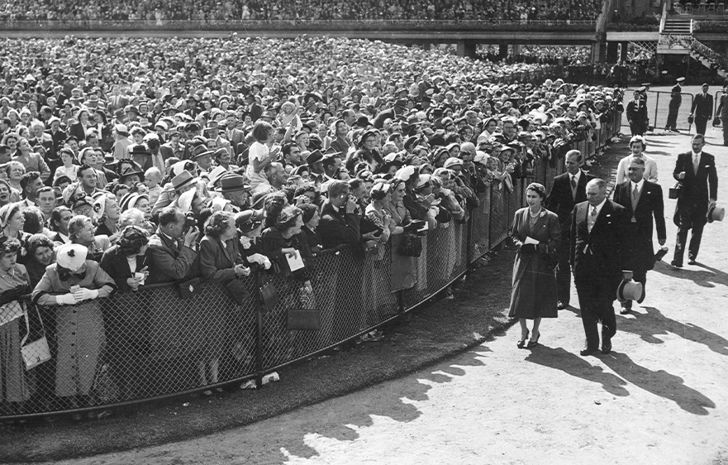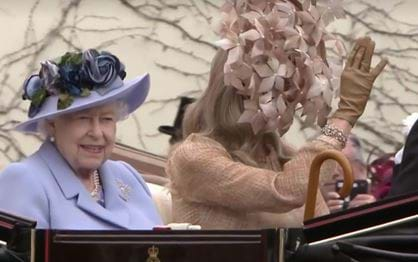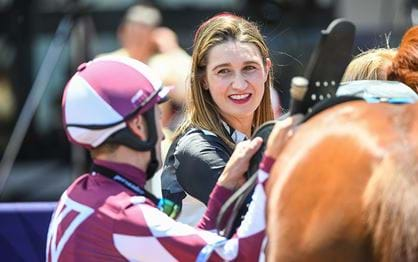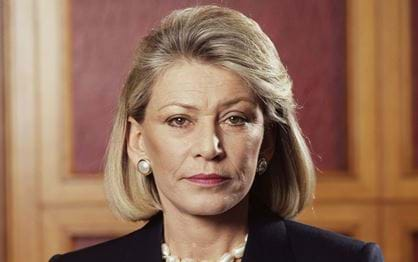
All the Queen's horses
On the passing of Her Majesty Queen Elizabeth II, we remember a leader who dedicated her life to service. Throughout her incredible life filled with duty, there was one constant that filled her with great happiness – her passion for horses and racing. Her involvement in the sport offered a glimpse of the person behind the crown.
Due to her passion for horses, Her Majesty Queen Elizabeth II has turned horseracing into the sport of queens.
First given a Shetland pony by her grandfather, King George V in 1930 when she was just four years old, Queen Elizabeth II took a keen interest in horses and racing all of her life.
From 1947 to 1986, whenever the Queen was in residence at Windsor Castle she rode during Trooping the Colour, a military parade held on The Queen’s Birthday holiday. For 18 years, the Queen rode a majestic black mare given to her by the Royal Canadian Mounted Police Service, and after the horse retired she chose to ride in a carriage, rather than take on a new horse.
The Queen also had a keen interest in horse breeding, and always closely monitored the progress of the horses each season that she had at the Royal Stud at Hampton Court and other studs in Norfolk and Berkshire. Such was her impact on the sport that the Queen was recognised for her contribution to racing as an owner and breeder by being inducted into the British Champions Series Hall of Fame in 2021.
Horses bred at the Royal Studs over the past 200 years have won nearly every major horse race in Britain, some multiple times. One such win was in 2008, when the Queen’s two-year-old colt Free Agent stormed from last place to take out the Listed Chesham Stakes during Royal Ascot. She had similar success in 1954 when two of her horses took home trophies: with Landau winning the Rous Memorial Stakes and Aureole winning the Hardwicke Stakes. And in more recent times, Estimate (ridden by Ryan Moore and trained by Sir Michael Stoute) winning the Group 1 Ascot Gold Cup over a gruelling 2 mile and 4 furlongs (4023m) was a win Her Majesty recalled fondly. She admired the horse so much that she erected a life-size sculpture of the racehorse at her holiday estate in Sandringham. The one major race that eluded the Queen was the Epsom Derby.

Queen Elizabeth II arrives in the parade ring on day four of Royal Ascot 2019. (Bryn Lennon/Getty Images)
Royal Ascot, a five-day event held annually in June, is where the Royal Family’s association with horse racing is best known. Queen Anne founded Ascot Racecourse in 1711 and Royal Ascot has been a highlight on the social calendar ever since. As a young princess, the Queen first attended the iconic race meeting in 1945 and from then always opened each day of the event, arriving in a horse-drawn carriage as part of the royal procession. COVID-19 in 2020 prevented her from attending the event, breaking this longheld tradition.
During Royal Ascot week the Queen and other members of the Royal Family customarily rode each day from Windsor Castle to Ascot Racecourse in open-topped, horse-drawn landau carriages, and paraded along the track in front of other racegoers.
This tradition dates back to the 1820s and the reign of King George IV, when it was then referred to as the Royal Parade or Royal Drive. In a letter dated 1825, diarist Thomas Creevey described the majestic scene: “The King drove up the course to his stand in the presence of everybody ... the Duke of Wellington by his side. There are three other carriages ... and a phaeton [two-seat carriage] after him, and I should think 20 servants in scarlet on horseback, and as all his horses are of the greatest beauty, the whole thing looked very splendid.”
By all accounts, the spectacle of thousands of people cheering as members of the Royal Family make their way down the straight is just as splendid in modem times. The royal procession also always gave the public its first opportunity to see the colour of Her Majesty’s outfit, with many bookmakers taking bets on what colour hat she would be wearing. While the Queen’s (jockey) racing colours are a purple body with gold braid, scarlet sleeves and black velvet cap with gold fringe, her outfits would always reflect her personal style. The royal racing colours were seen at Flemington in 1997, when the Queen's stayer Arabian Story ran sixth to Might And Power in the Melbourne Cup.

Chad Schofield riding Bold Sniper jumps from the barriers Antler Luggage Handicap on Stakes Day at Flemington in 2015 (Michael Dodge/Getty Images)
The racing silks have been in the royal family since the Queen’s great-grandfather, King Edward VII, introduced them in the late 19th century.
While The Birdcage at Flemington is a hive of celebrity and notable personalities during the Melbourne Cup Carnival, the most sought-after ticket at Royal Ascot is an admittance to the Royal Enclosure, the place to be if you want to rub shoulders with the Royal Family. Access is highly restricted: you need to be sponsored by an existing member who has attended for four previous years, and a strict dress code is enforced. Men are required to wear a morning suit complete with top hat, while women must wear formal racewear with a hat. Fascinators are deemed a no-no in the Royal Enclosure.
Our own racing royalty, trainer Gai Waterhouse has watched the races from the Royal Box at Ascot, alongside the late Queen Mother, mother of Queen Elizabeth. “One of my most enjoyable Ascots was when my husband and I were able to meet the Queen Mother. We spent about one hour with her when I trained for her. She was very down to earth and took great interest in what we had to say and what we were doing. Her knowledge of racing was unbelievable, just like the Queen’s,” Waterhouse said.

Jockey Bill Williamson is congratulated by the Queen after his win on Sunish in the Duke of Edinburgh Australian Cup at Flemington. (Fairfax Publishing)
A race fit for a Queen
Now held on VRC Champions Stakes Day, on the last day of the Melbourne Cup Carnival, the VRC Queen Elizabeth Stakes is a Group 3 quality handicap race. Run over 2600m, the race was introduced in February 1954 to mark the first visit to Flemington of Queen Elizabeth II, and until 1979 was part of the autumn racing carnival.
Notable winners of The Queen Elizabeth Stakes include True Self (2019), Precedence (2013), Puissance De Lune (2012), Our Smoking Joe (2005), Zazzman (2003), Makybe Diva (2002), Might And Power (1998), Hyperno (1979, 1980), Gunsynd (1872, 1973), Big Philous (1970), Rain Lover (1969), Galilee (1967), Lord (1962, 1963), Sailor's Guide (1956), Redcraze (1957) and Rising Fast (1954).
Did you know?
The Queen (accompanied by Prince Phillip, Duke of Edinburgh) was the first reigning monarch to visit Flemington, in 1954. Her Majesty was again a visitor in 1963 and 1977.

Australian ties
The Queen long admired Australian horses and racing, and the royal family has a long history with jockeys and trainers from our country. Australian jockeys Edgar Britt, Arthur ‘Scobie’ Breasley AM (1950s), George Moore (1960s) and Ron Hutchinson (1960s) all rode for Queen Elizabeth II. More recently Kerrin McEvoy, Tommy Berry and Dylan Dunn all had the pleasure of riding for Her Majesty in recent years.
The Queen raced horses in Australia on occasion, most notably Arabian Story who ran sixth in the 1997 Melbourne Cup and was ridden by Frankie Dettori.
More recently, the Queen’s horses Bold Sniper and Carlton House competed here. Jockey Dylan Dunn, who was an apprentice at the time of riding Bold Sniper in 2016 at Sandown was so excited by the ride he changed into the famous royal colours long before he was due on the track. Bold Sniper was first trained by Gai Waterhouse before being transferred to David Hayes and Tom Dabernig. Dabernig gave some insight into just how involved the Queen was with her horses, stating at the time: “She’s very involved. She’s quite fascinated. She gets her YouTube videos of the horse working each week.” It was the second time Lindsay Park was involved with Her Majesty. Australia’s national gift to Her Majesty for her Jubilee Year in 1977 was the filly foal Australia Fair, sired that year by resident stallion Without Fear, foaled in 1978, reared by David’s father Colin Hayes, and handed over to the Queen in 1980 by Prime Minister Malcolm Fraser on the lawns of Government House, Canberra.
Gai Waterhouse not only trained Bold Sniper, but also looked after Carlton House before he retired to stud in 2014. She also trained two horses for the Queen Mother, mother of the Queen. Although Carlton House did not win a race in Australia, he achieved Group 1 placings in the Ranvet Stakes (second to Silent Achiever) and the AJC Queen Elizabeth Stakes at Randwick (third to It’s A Dundeel) in the autumn of 2014.
As testament to her admiration for our equine athletes, it is hard to forget the moment that Her Majesty shared with Black Caviar after the mare’s 22nd consecutive win, in the 2012 Group 1 Diamond Jubilee Stakes at Royal Ascot. Clearly fascinated by the unbeaten champion, Her Majesty gave Black Caviar a pat on the nose, which the horse met with a bow of her head, a tender moment between two queens.
Hero Image: Queen Elizabeth II and Sir Chester Manifold, VRC. Chairman, at Flemington Racecourse on her Australian tour in 1954. (Fairfax Publishing)


